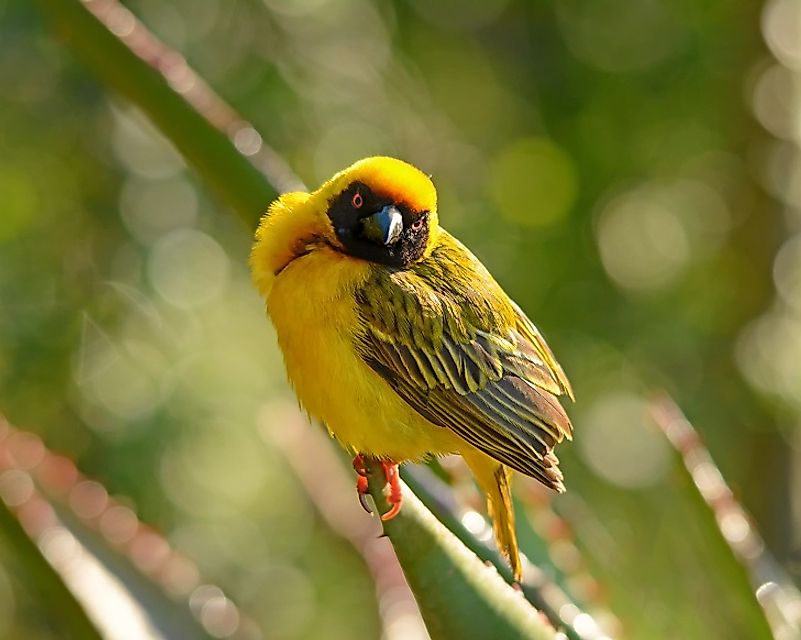Endemic Birds Of Kenya

Below, we take a look at a few of the most unique of the bird species endemic to the East African nation of Kenya.
Jackson's Francolin
This bird is medium-sized, having both a red coloration of the beak and legs, with a mix of brown and grey on the feathers. The Bird inhabits high altitudes, with mountain climates. Their habitats include montane forests and alpine zones, especially those with juniper and bamboo forests. They are common to both Kenya and Uganda. Incubation period is 18 days. It makes a loud, cackling call to announce its presence. This bird feasts on grasses, bulbous roots, seeds from fruits, and insects such as grasshoppers. This species is classified as "least concern," as any evidence of threats is currently unknown.
William's Lark
This is a songbird which is small in size with a heavy bill and brown and white feathers. The bird is endemic to Northern Kenya, and is most commonly found in rocky deserts, in short grasses, and shrubs. The incubation period is between 10 and 16 days, while brooding lasts for 4 days and is usually done by the females. The bird leaves the nest after about 10 days. It makes a loud and long calling sound to establish its territory, especially during rainy periods, and lifts its feathers during courtship display. Foods eaten include small insects, grasses, fruits, and seeds. This bird is either endangered or vulnerable, depending on the location and the subspecies. Conservation efforts are still ongoing.
Sharpe's Longclaw
This is a small, slender bird with brown feathers and a yellow belly. It is common in West and Central Kenya, where it inhabits grasslands. Breeding occurs from March to June, September to October, and December, during or after the rainy season. These birds mostly hunt for food in pairs and make a high whistling sound while descending from heights. Foods commonly eaten include small insects, especially grasshoppers and beetles. This bird is an endangered species due to loss of habitat caused by conversion of grasslands into farmlands. There are currently a few conservation groups attempting to control crop cultivation on grasslands in order to restore habitats.
Tana River Cisticola
This bird is small in size and long-tailed, with a short pointed beak and a grayish-silver coloration. The bird is endemic to Eastern Kenya but it is rumored that it may also be found in Somalia. Common habitats include subtropical or tropical moist shrubland and wet grasslands. There is no information provided on the life cycle since the bird is believed to be extinct. It makes a sound similar to that of rattling. This bird is insectivorous in nature, mainly feeding on grasshoppers. This bird may be currently extinct due to the destruction of the Tana River Delta- its habitat.
Aberdare Cisticola
This is a small bird with a short, almost to the point of being non-existent, neck, having brown feathers streaked with white. The bird is endemic to Central Kenya. Its inhabits high grasslands and generally, mountainous areas. Nesting period is usually between January and May, and August and November. With its heavy bill and sharp claws, it forages the ground for food. The diet consists mainly of insects, especially beetles and flies. This bird is currently listed as endangered due to loss of habitat to agriculture and livestock production. Most of the habitats are legally protected.
Hinde's Pied Babbler
This bird can be found with either a dark brown and white or a grey and white coloration, although no two babblers will exhibit quite the same characteristics. This bird is endemic to Central Kenya. It mainly exists in scrublands or thickets, and in riverine areas. Breeding occurs in February, April, and August to October. They reproduce many offspring at a time. The adult makes a series of loud chattering sounds, to alert the young of the availability of food. It feeds on fruit seeds, and insects such as grasshoppers. This species is classified as vulnerable, due to the continuous decrease in habitats. Efforts to maintain existing habitats are underway.
Clarke's Weaver
The Clarke's Weaver is a small bird with a black coloration of the head and upper body, and a yellow underbelly. Endemic to Kilifi County in Kenya, its preferred habitats are in woodland and wetlands. Breeding take place between February and March, and again in September. The males make a hissing sound while in flight. The diets of these birds largely consist of insects such as beetles and caterpillars. It also feasts on fruits. The population of this species is declining due to the loss of its woodland habitat. Hence it is endangered. Conservation groups are currently working with elders of the locale to preserve existing habitats.
Endemic Birds Of Kenya
| Endemic Birds of Kenya | Scientific Name |
|---|---|
| Jackson's Francolin | Pternistis jacksoni |
| Williams's Lark | Mirafra williamsi |
| Sharpe's Longclaw | Hemimacronyx sharpei |
| Tana River Cisticola | Cisticola restrictus |
| Aberdare Cisticola | Cisticola aberdare |
| Hinde's Pied Babbler | Turdoides hindei |
| Clarke's Weaver | Ploceus golandi |











